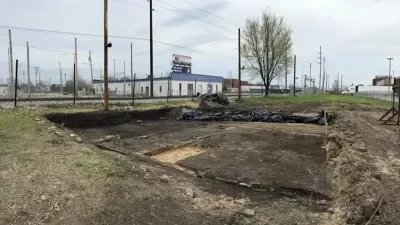Within three decades, there will no longer be a majority racial or ethnic group in the Unites States according to new Census Bureau projections released this week. Among the other findings: the country is growing slower than expected.
Michael Cooper reports on the first set of projections issued by the Census Bureau based on the 2010 Census results. “The next half century marks key points in continuing trends — the U.S. will become a plurality nation, where the non-Hispanic white population remains the largest single group, but no group is in the majority,” the bureau’s acting director, Thomas L. Mesenbourg, said in a statement.
"The new projections — the first set based on the 2010 Census — paint a picture of a nation whose post-recession population is growing more slowly than anticipated, where the elderly are expected to make up a growing share of the populace, and that is rapidly becoming more racially and ethnically diverse," says Cooper. "All of these trends promise to shape the nation’s politics, economics and culture in the decades to come."
While the Bureau has had to revise previous growth projections to account for decreasing birth and immigration rates, "[t]he diversity of the nation’s children is increasing even faster than was previously expected, said William H. Frey, a demographer at the Brookings Institution. 'When the 2020 Census comes around, we’re going to have a majority-minority child population,' he said in an interview."
"The Census Bureau expects that moment to come in 2018, several years earlier than it previously predicted. The bureau predicts that by 2043 — which is a year later than it previously projected — there will be no single majority group in the country as a whole, as the share of non-Hispanic whites falls below 50 percent."
FULL STORY: Census Officials, Citing Increasing Diversity, Say U.S. Will Be a ‘Plurality Nation’

Maui's Vacation Rental Debate Turns Ugly
Verbal attacks, misinformation campaigns and fistfights plague a high-stakes debate to convert thousands of vacation rentals into long-term housing.

Planetizen Federal Action Tracker
A weekly monitor of how Trump’s orders and actions are impacting planners and planning in America.

San Francisco Suspends Traffic Calming Amidst Record Deaths
Citing “a challenging fiscal landscape,” the city will cease the program on the heels of 42 traffic deaths, including 24 pedestrians.

Defunct Pittsburgh Power Plant to Become Residential Tower
A decommissioned steam heat plant will be redeveloped into almost 100 affordable housing units.

Trump Prompts Restructuring of Transportation Research Board in “Unprecedented Overreach”
The TRB has eliminated more than half of its committees including those focused on climate, equity, and cities.

Amtrak Rolls Out New Orleans to Alabama “Mardi Gras” Train
The new service will operate morning and evening departures between Mobile and New Orleans.
Urban Design for Planners 1: Software Tools
This six-course series explores essential urban design concepts using open source software and equips planners with the tools they need to participate fully in the urban design process.
Planning for Universal Design
Learn the tools for implementing Universal Design in planning regulations.
Heyer Gruel & Associates PA
JM Goldson LLC
Custer County Colorado
City of Camden Redevelopment Agency
City of Astoria
Transportation Research & Education Center (TREC) at Portland State University
Jefferson Parish Government
Camden Redevelopment Agency
City of Claremont





























